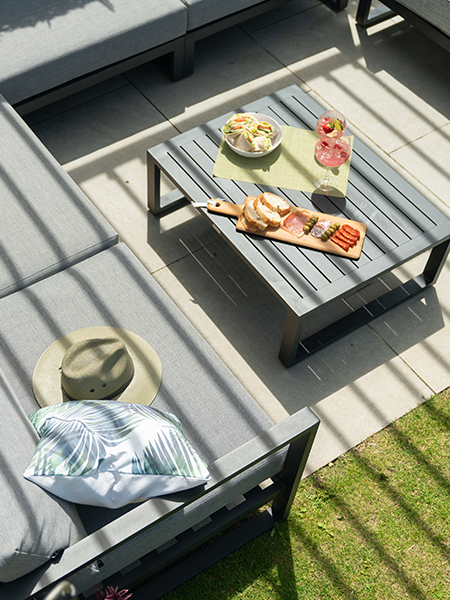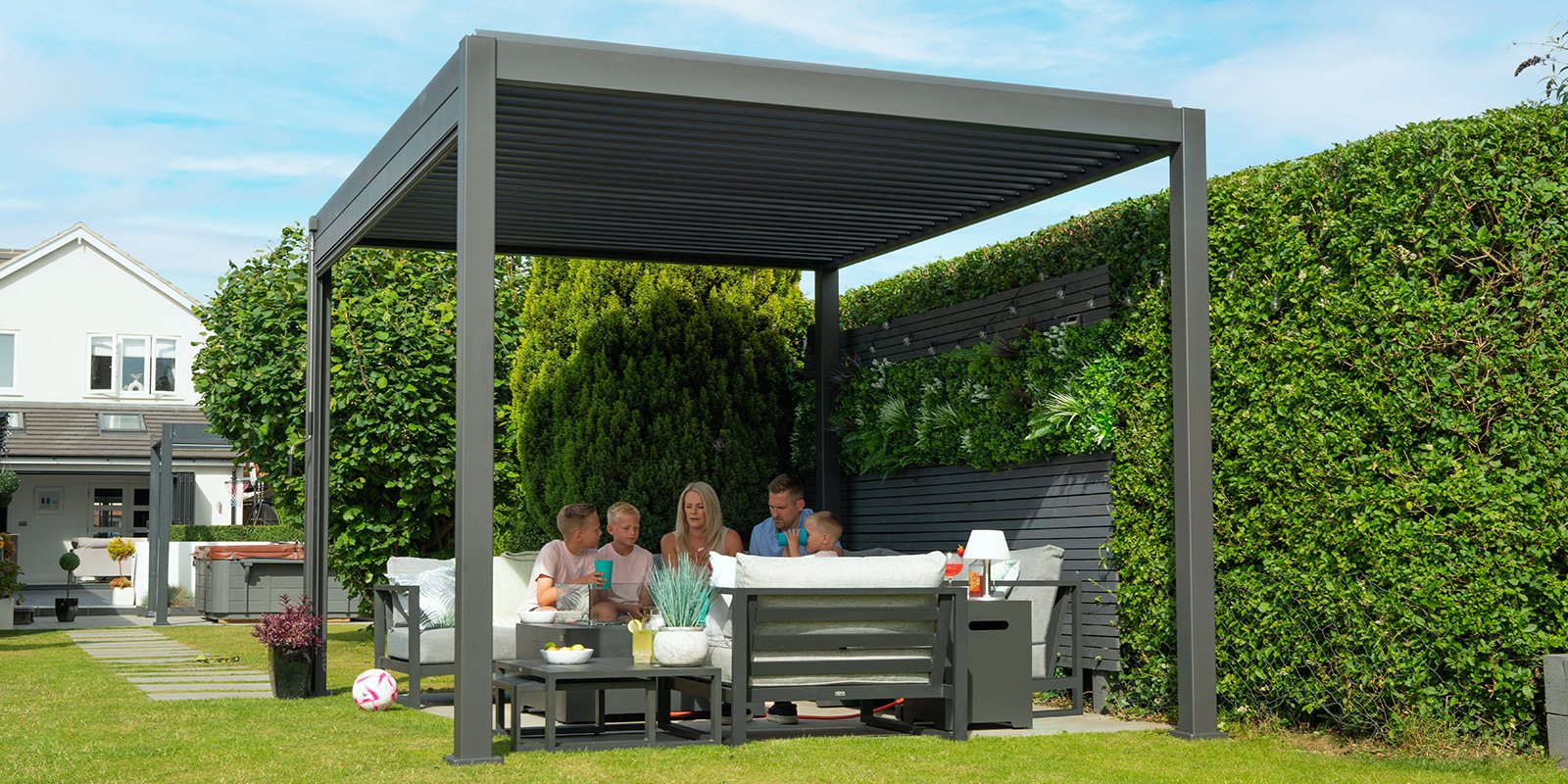Over the past couple of months, the UK has experienced storm after storm, battling extreme weather including high winds, rain and in some places snow. These conditions are enough to cause a lot of interruption, and damage, and even bring down trees. So, how can we keep our garden furniture safe, particularly pergolas?
Pergolas add style and functionality to gardens; however, these structures do require care and maintenance to withstand extreme weather conditions. In the UK, where high winds and snow are not uncommon, it's essential to take precautions to keep your garden furniture looking its best. In this blog, we'll discuss strategies for protecting your pergola during high winds and snowfall.
Battle the breeze
The UK occasionally experiences strong winds, some storms reaching up to 60mph. This can pose a real threat to our garden furniture, particularly pergolas. Our pergolas have been tested for high winds using the Beaufort scale. While modern pergolas are designed to withstand such conditions, it's crucial to take proactive measures to ensure their safety.
Choose a sturdy pergola: When selecting a pergola, opt for one that has been tested for wind resistance, like ours! This ensures that your pergola is built with these high winds in mind.
Proper louvre adjustment: During windy conditions, we recommend that you open the louvred roof of your pergola slightly, around a 45-degree angle. This allows the wind to pass through safely, reducing the risk of damage to your pergola. By adjusting the louvres, you can minimise the impact of strong gusts and prevent potential structural issues.
Secure your pergola: During installation, we always recommend bolting down your pergola into a solid flooring. Our pergola kits come with expansion bolts as standard and should be drilled into each leg base.
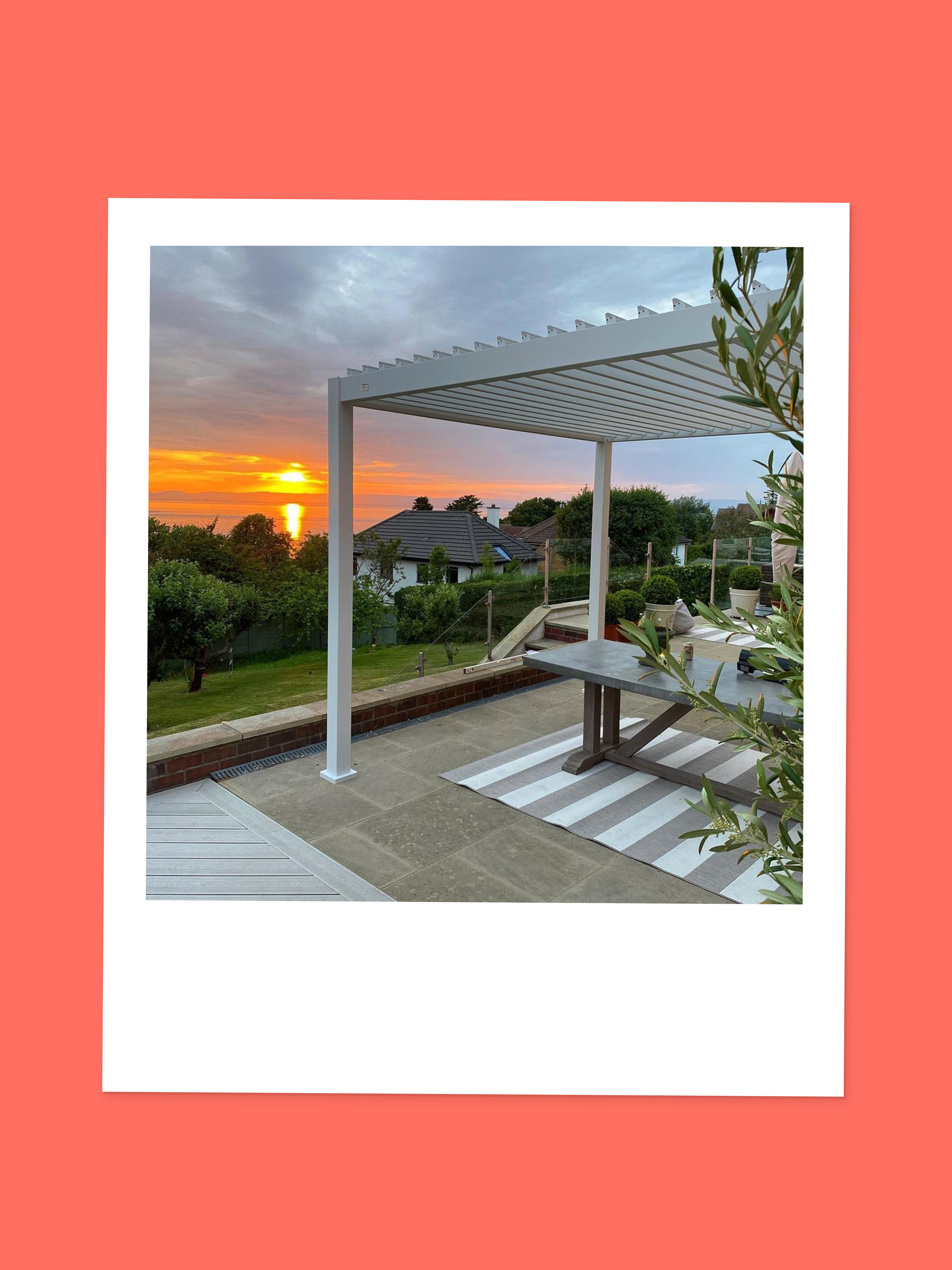
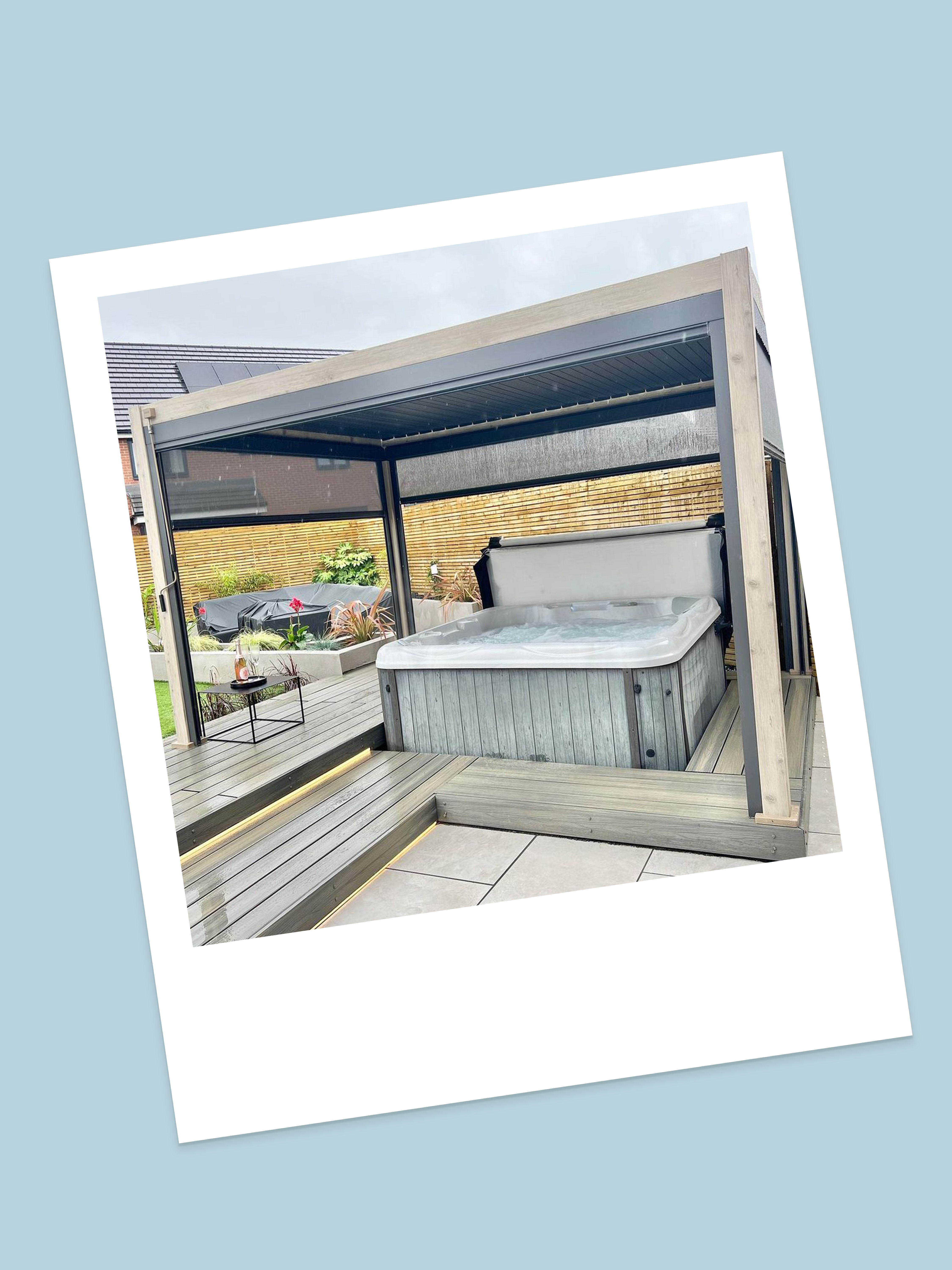
opt for one that has been
tested for wind resistance,
like ours!
Survive the snowfall
Snowfall can transform your outdoor space into a winter wonderland, but it also presents challenges for your pergola. Heavy snow accumulation can exert significant pressure on the structure, leading to potential damage if not properly managed. So, how do you keep your pergola safe in snow?
Open the louvred roof: When snow is forecasted, make sure you remember to head outside and fully open your pergola roof. Allowing the snow to pass through the open louvres prevents snow build-up on the roof. If snow does settle on closed louvres, the added weight can risk bending the metal.
Regular snow removal: In areas with heavy snowfall, try to spare a few minutes throughout the day to remove as much snow from the pergola roof. Use a soft-bristled brush or a snow rake to gently clear the snow without causing damage to the structure. Be cautious not to use too much force, especially if the snow has frozen or become compacted.
Inspect for damage: After severe weather, inspect your pergola for any signs of damage or stress. Look for bent or damaged louvres, loose fasteners, or structural shifts. Address any issues promptly to prevent further damage and ensure the longevity of your pergola.
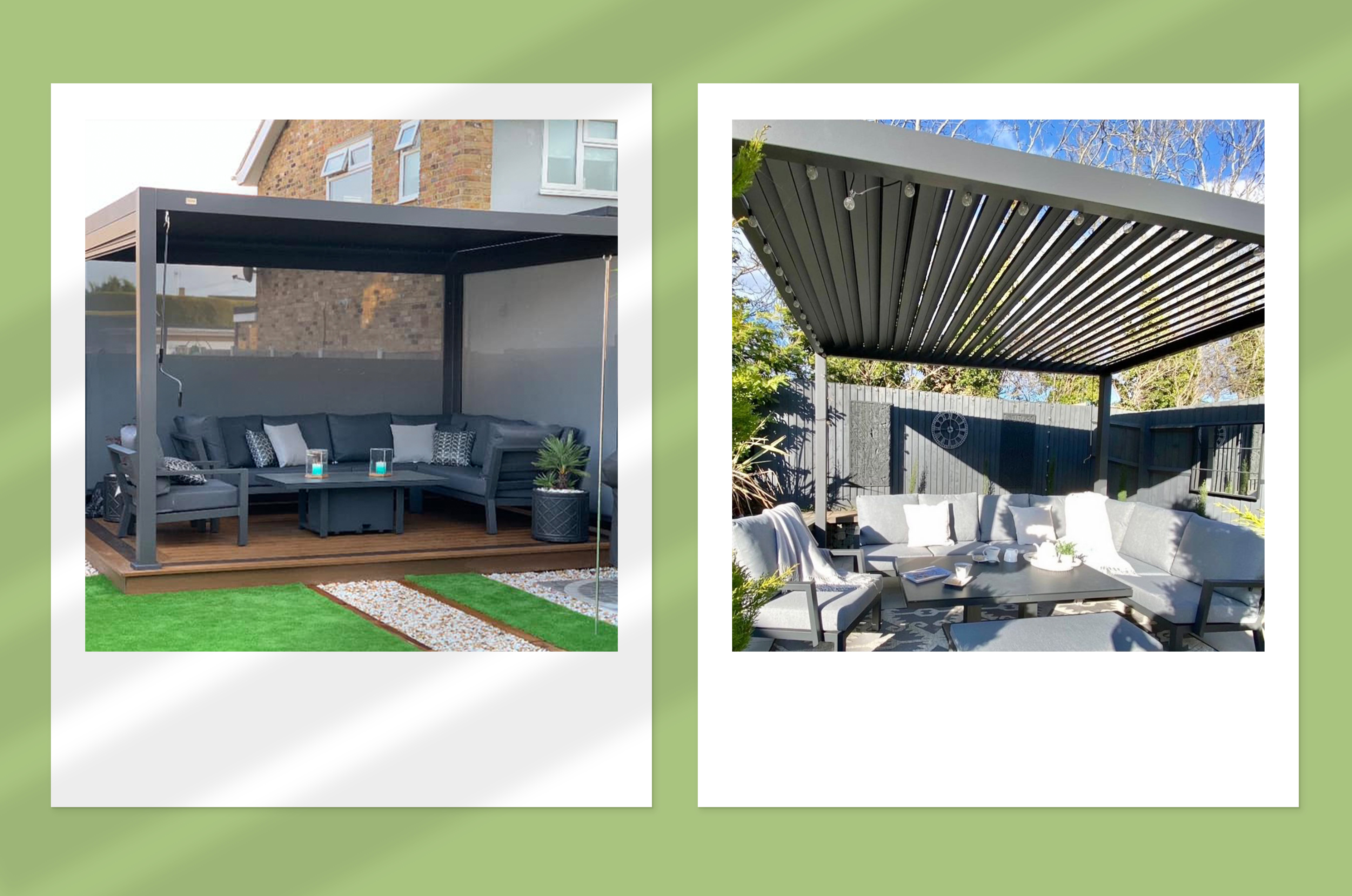
Protecting your pergola during extreme UK weather requires proactive measures and regular maintenance. By following the tips outlined above, you can safeguard your pergola against high winds and snowfall, ensuring its durability and longevity for years to come. Remember to prioritise safety and take necessary precautions to preserve the style and functionality of your outdoor space, regardless of the weather conditions.
